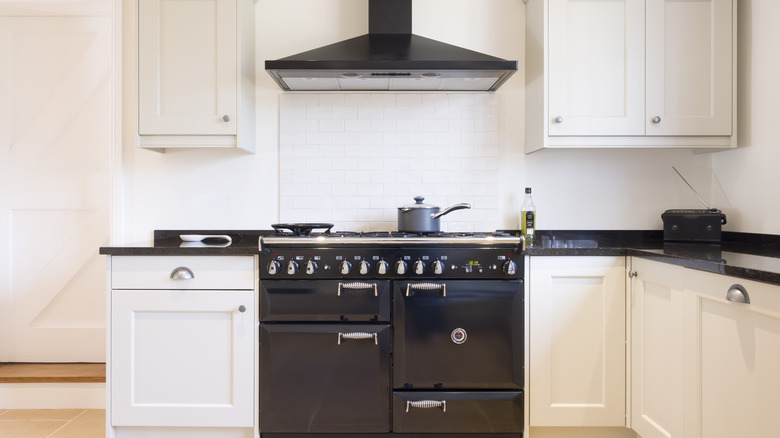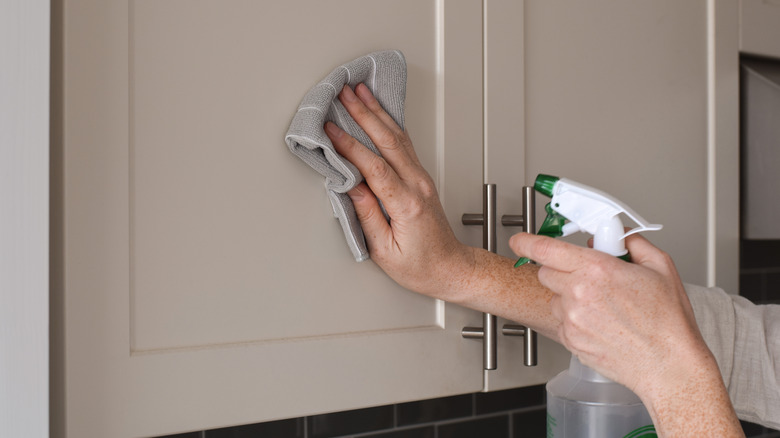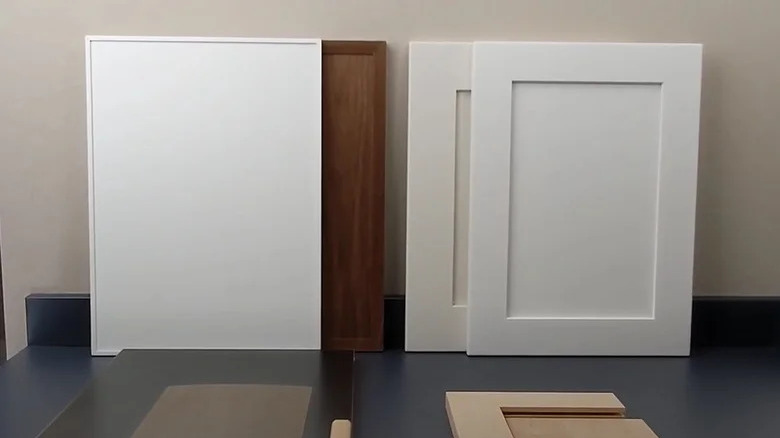The Hidden Downsides Of Shaker Style Cabinets
There is a reason why shaker kitchen cabinets feel so timeless — they have been in use for centuries. Quakers first crafted them in the mid-1700s, and they reached mass appeal in the mid-19th century, appearing across many Victorian homes. They have been gracing the walls of American kitchens pretty consistently since then, and that's because of their unfussy design. Shaker-style cabinets have a border of wood outlining the door, which creates a recessed center panel. Its minimalist and paired-down nature helps it stand the test of time, allowing it to seamlessly blend in with changing kitchen designs over the decades. But while this design is popular, it's not without its cons. And if you're currently remodeling a kitchen and considering getting shaker cabinets, it would be helpful for you to know their drawbacks.
The first con is that shaker-style cabinets can be cumbersome to clean. While they're much simpler than ornate cabinets with etched grooves and designs, their recessed panels still catch a fair amount of dust, grime, and grease in their crevices. This might not be ideal for someone who wants an easy-to-clean kitchen. The second is that they are starting to decrease in popularity, so they might not be the best fit if you're remodeling your kitchen to sell your house. Here is a closer look at shaker cabinet downsides and what to consider getting instead.
Are shaker cabinets really losing popularity?
The first downside to shaker cabinets is their recessed center panels. Since a thin wooden border outlines them, grime can settle on top of that border and within its corners. This can become difficult to clean, especially if you don't wipe them down routinely and allow the dust to cake. To clean your shaker cabinet's nooks and crannies, you need to deep-clean them, which can involve grabbing a can of compressed air to blast away any embedded crumbs or dirt. This is much more labor-intensive than wiping down the flat surface of a flat panel cabinet, for example. If you dislike cleaning your cabinets or want one that you can quickly wipe down, this might not be the best design for your needs.
The second downside is that shaker-style cabinets might be losing popularity. While they don't feel too dated in general when compared to other designs, they might not feel as fresh. Due to their steady approval and routine appearance on HGTV renovations and Milennial gray kitchen makeovers, they're beginning to feel a bit tired for some renovators. According to the 2023 U.S. Houzz Kitchen Trends Study, while shaker-style cabinets are still the most favored choice, they fell in popularity from 64% to 61%. In contrast, flat-panel doors have grown in popularity by three points, with 20% of renovators now choosing them.
Alternatives to consider
If these disadvantages are enough to discourage you from getting shaker cabinets for your kitchen, then you probably want some stylish alternatives. Which way you head depends on what your needs are. If you're turned off by them due to their upkeep and need for intensive cleaning, you may be better off looking at flat-panel doors. These are exactly what they sound like — flat doors with no ornamentation or paneling. This ensures that no crumbs, dust, or grease can stick to its grooves or borders since there are none.
However, if you're second-guessing a shaker-style design because it's starting to feel overused and slightly dated, then consider the new shaker cabinets with a twist. These cabinets have the same border encasing a center panel, but the border has slimmed from 4 inches to 1-2 inches. This creates a more contemporary feel that appears fresh and new rather than traditional or farmhouse-inspired. They still feel timeless but not overdone.


